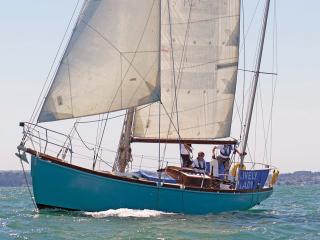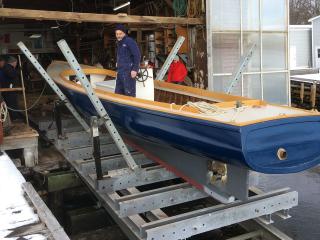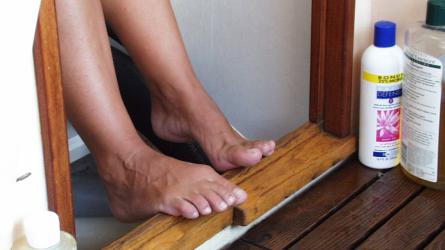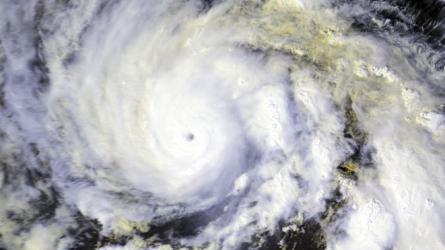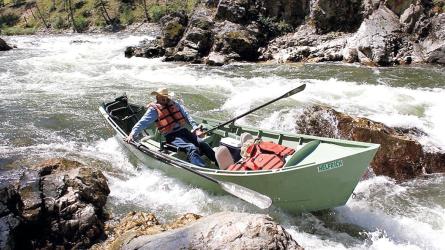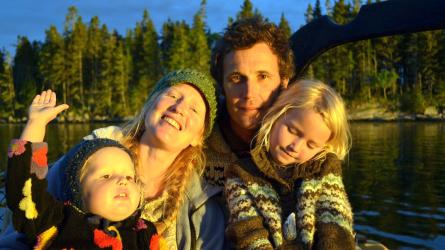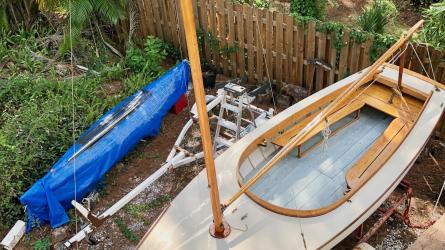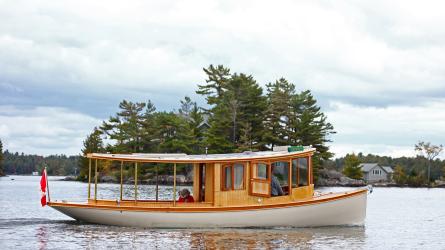May / June 2020
Making a Pair of 7' Oars
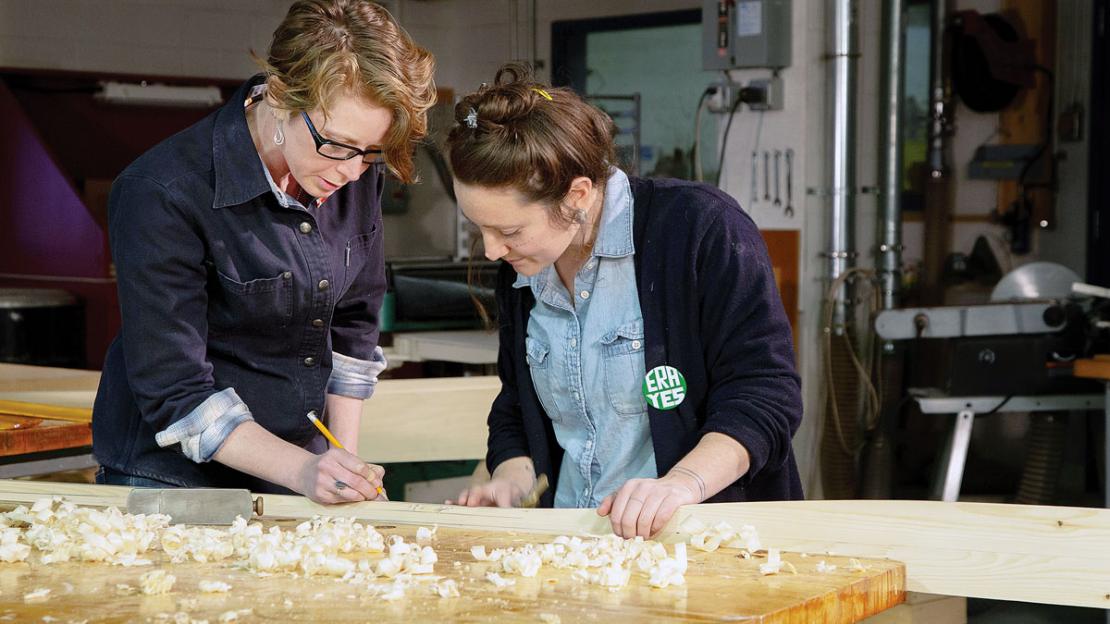
Maine Maritime Academy Instructor Molly Eddy shows student Zoe Ciolfi the finer points of oarmaking, using author Andy Chase’s methods adapted from those of R.D. “Pete” Culler.
In his book Boats, Oars, and Rowing, Pete Culler discusses what makes a really good pair of oars, and how any modestly skilled woodworker can make their own. To row with a really nice pair of oars in a decent rowboat is not just good exercise; it’s good therapy, as well. Combining Culler’s advice and my own experience, I present the following guidance:
• To help balance the oar, leave the shaft square or octagonal from the leather to the handle, and remove as much wood as possible from the blade end. I prefer the look of octagonal, though the square version would put more weight above the oarlock, where you want it.
• Unless you are a competitive rower (or pretending to be), you don’t need spoon-bladed oars. When you dip a spoon-bladed oar in the water, it pretty much stops and you must pull the boat past it. That’s a lot of work. The rest of us need our oar blades to slip a little at first, so make your blades long and narrow. Once you get your boat moving, the blades won’t slip much, but it’s a lot easier to get things moving with a blade that slips a bit, initially.
• To lighten the oar below the leathers, Culler makes the shaft go from round right at the leathers to oval as it approaches the blade. In fact, you’ll notice that there is a straight taper from the handle all the way to the end of the blade when viewed from the edge of the blade. Such an oar would be pretty easy to bend sideways, but not in the direction of pull.
• Continuing that idea, Culler scallops out the blade on either side of the center ridge, again to remove excess weight wherever possible outboard of the oarlock. This also happens to make a very pretty oar.
• Finally, note the shape of Culler’s handle: it is much more comfortable than a stock oar’s barrel shape, and it also keeps your hand securely on the oar. If you have large hands, you might want to increase the diameter by 1⁄8".
To read the rest of this article:
Click the button below to log into your Digital Issue Access account.
No digital access? Subscribe or upgrade to a WoodenBoat Digital Subscription and finish reading this article as well as every article we have published for the past 50-years.
ACCESS TO EXPERIENCE
Subscribe Today
1 YEAR SUBSCRIPTION (6 ISSUES)
PLUS ACCESS TO MORE THAN 300 DIGITAL BACK ISSUES
DIGITAL $29.00
PRINT+DIGITAL $42.95
Subscribe
To read articles from previous issues, you can purchase the issue at The WoodenBoat Store link below.
 Purchase this issue from
Purchase this issue from


